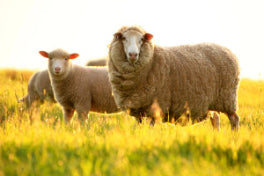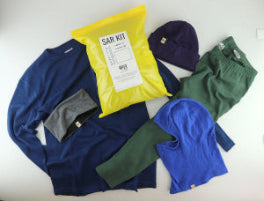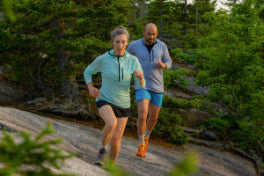INTRO TO LAYERING
Layering is a great way to thermoregulate your body as weather conditions and activity levels change throughout the day. Whether you’re going for a quick day hike, or taking on a thru-hike, having the right layers can make your trip more enjoyable and also keep you protected against hypothermia or heat exhaustion.
There are many combinations of layers that can be used, and you may need to experiment to figure out what is right for you. Typically, most people use a 3-4 layer system consisting of a base layer, a mid layer, an insulating layer, and an outer shell layer. Simply add or subtract layers as the environment changes.
Base Layer
IDEAL SEASONS Summer Spring Fall Winter

Your Base Layer is your second skin. This is your first layer on and your last layer off.

Your base layer should be: thermal, moisture-wicking, breathable and comfortable under all conditions. Merino wool base layers provide excellent moisture management through superior wicking and fast-drying capabilities.

Base layers come in a variety of fabric weights. Depending on your environment, you may prefer a thinner or thicker layer.

Merino wool is also naturally odor-resistant, and antimicrobial. It is super soft and comfortable against the skin.

Wool is a great natural insulator, and when it does get wet, it will still insulate you better than other fabrics.

Remember — Never wear cotton in the outdoors – cotton does not dry quickly, and staying wet can put you at risk of hypothermia. Cotton is a killer!
Mid Layer
IDEAL SEASONS Early Spring Late Fall Winter

The Mid Layer is your second layer. It should provide extra insulation while still being breathable.

Zips are often used in Mid Layers for easy removal and replacement, as well as helping you vent without completely removing the layer.

Merino wool works great as a Mid Layer, too. It is plenty breathable and will work great to regulate your body temperature. Its warmth to weight ratio is excellent, allowing you to easily shed your mid layer and pack it away as conditions change.
Insulating Layer
IDEAL SEASONS Early Spring Late Fall Winter

The Insulating Layer is used when the weather is colder. It is a second breathable Mid Layer that provides extra warmth.

Like the Mid Layer, it too can be easily removed and packed away as conditions change.

You can double up on merino wool for extra insulation, or go with something loftier such as a fleece pullover. Some jackets can double as a shell and insulating layer.
Outer Shell Layer
IDEAL SEASONS Summer Spring Fall Winter

Your Outer Shell is your last level of defense against the elements of nature. It should be wind and water resistant, packable, and breathable. Many shells have vents and waterproof membranes for added breathability.

Your mid or insulating layer can become your outer layer when conditions permit. Even for warmer weather, you should always pack a shell layer just in case. A lightweight windbreaker is great for spontaneous rain showers.

You’ll probably want your winter shell layer to be a little more hardcore, with insulation built in, and adjustable features on the hood, waist, and sleeves to trap in your body heat.
Accessories
IDEAL SEASONS Summer Spring Fall Winter

FEET
For the coldest days, footwear can have layers just like the rest of your body. Start with a liner sock, then a loftier sock, and finally a good boot over the top. A liner sock can also help with blister prevention.
--
Wool socks are the way to go. Make sure you have enough room in your boots to move your toes – this helps your blood circulate.
--
Pro Tip: Carry a spare set of socks so you can switch for a dry pair if your feet do get wet.

HEAD
Even in milder temperatures, a beanie can be a great tool to block the sun from beating down on your head.
--
A good hat may not always be enough – for colder temperatures, consider a balaclava or neck gaiter that will cover your neck and ears
--
The removal or partial removal of your head gear is a great way to cool down fast when overheating.
--
Goggles or sunglasses can also help protect your eyes from sun rays, rain, wind, or snow.

HANDS
Add some merino wool glove liners for extra warmth under a waterproof glove or mitten.
--
Just like your feet, make sure your hands have enough room to move and keep your blood circulating. Hand warmers can also be a great addition to your kit.
PUT IT TOGETHER
Layering systems are customizable and interchangeable. Your layering system will vary based on activity, season, and your personal comfort.
Not everyone will layer the same. New Englanders might be wearing shorts at 40 degrees, while Floridians are reaching for their winter coats. Some people’s hands and feet get colder easier. Some people just plain run hot.
You may need to experiment to figure out what will work best for you and your activities. A good layering item in your pack is better than one left at home.

Proper layering of your garments is very important and in extreme cases may save your life. Consider your activities carefully and plan for the unexpected. For more info on outdoor safety, please visit our hikeSafe blog.








